Digging through AliExpress, I came across a new Matter power strip. This device has 4 individually controlled sockets and 2 USB-A ports that operate together. I currently use a similar Zigbee power strip for my PC peripherals, though its S4 socket cannot be controlled for some reason.
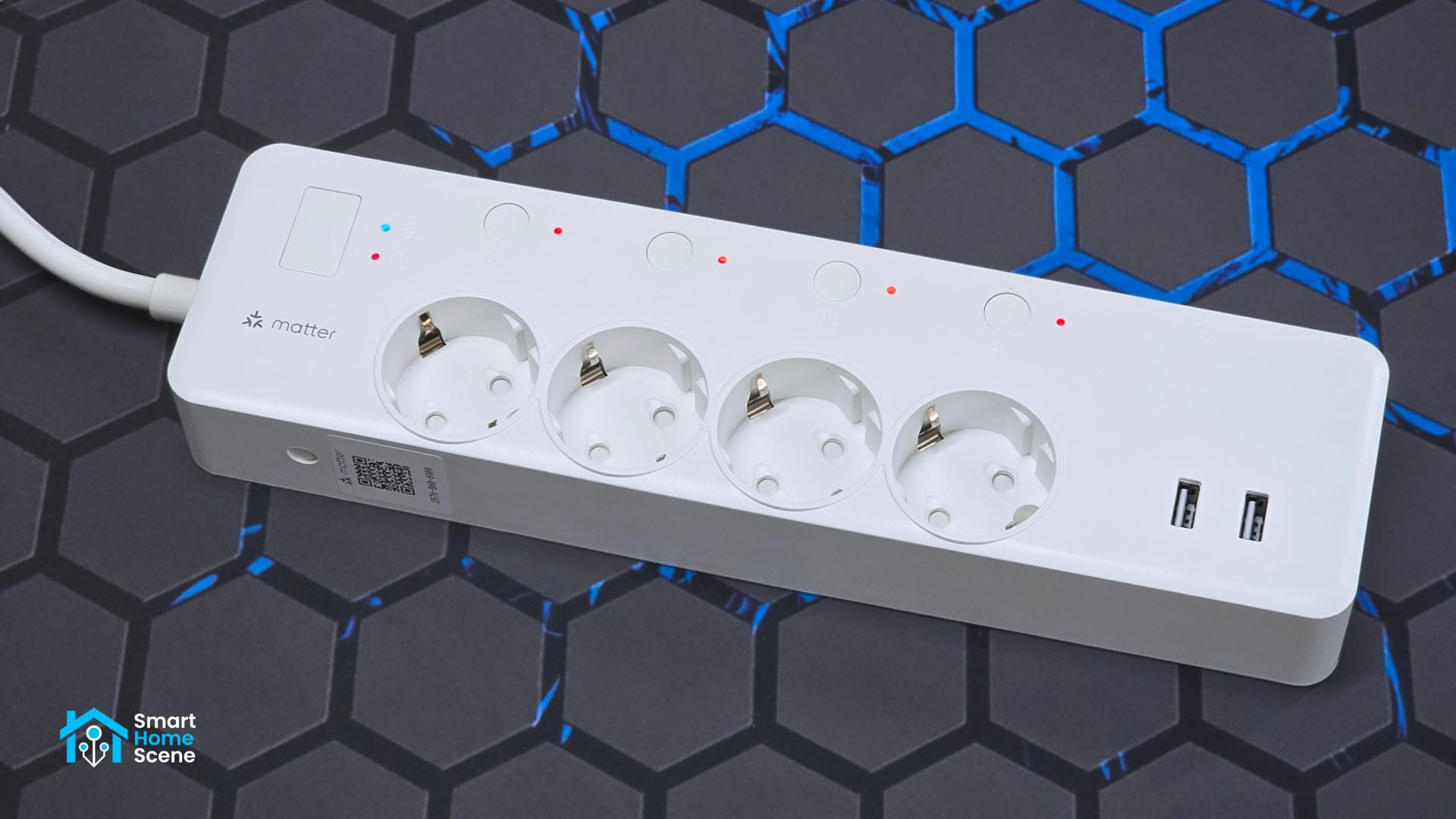
In this review, I’m testing the new Tuya Matter Power Strip with 4 sockets and 2 USB ports. Even though sold under many names, this device is manufactured by Uascent and is available on AliExpress for around $36.
Technical Specification
- Name: Matter Power Strip
- Model: WP35
- Input: 100-240V AC
- Sockets: 4x16A
- USB Ports: 2x5V3A (total)
- Connectivity: Matter over Wi-Fi
- Cable Length: 1.8m
- Energy Meter: No
- Size: 295x79x38mm
- Price: $36 | AliExpress
Teardown and Package Contents
This Tuya WP35 Matter Power Strip ships in a huge box containing the device itself and a user manual. Because of it’s size, some places may encounter increased shipping costs when ordering from AliExpress. The device is well protected from shipping damage, with multiple layers of carton to hold it in place.
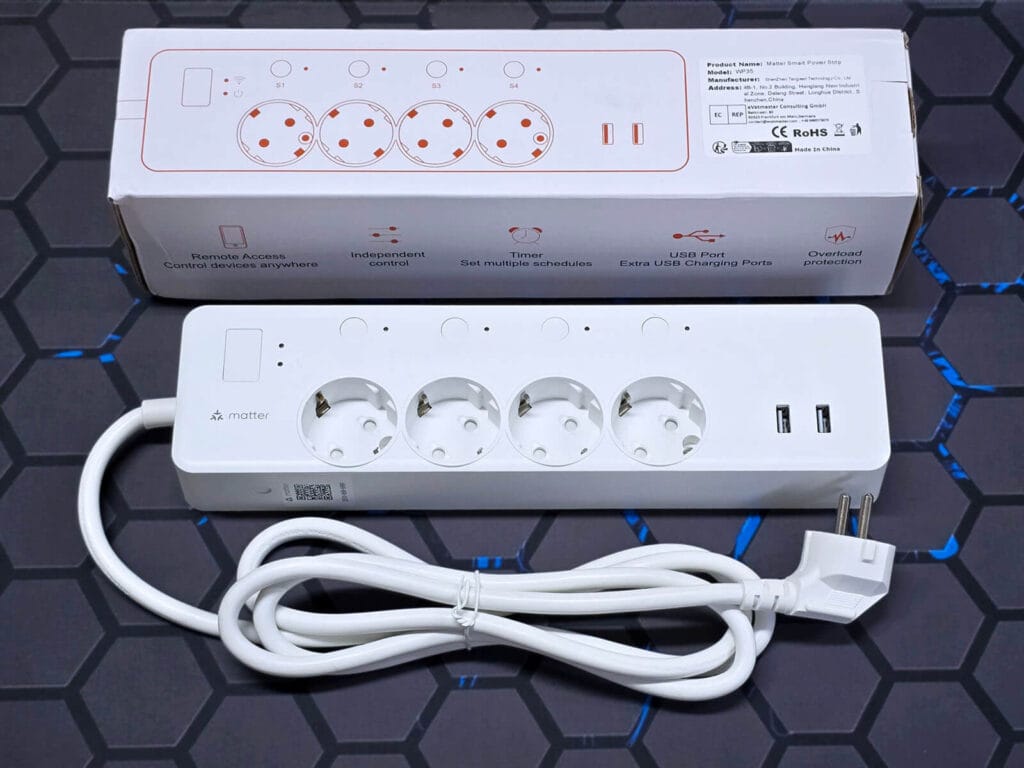
This Matter power strip is very large and heavy. Usually, 4-socket strips are about as long as the sockets take up space. Because of the USB ports and control buttons, this power strip is much larger, measuring at almost 300mm in length. It feels sturdy, compact and well-built all around. The size does not make a difference to me, but it’s worth noting so you know what to expect.
Each button controls one of the sockets individually. The main button on the left controls the USB ports on the right side. These are toggled together, as the strip does not offer individual switches for each. The indicator LEDs cycles from red to blue to mirror the state of the sockets. This power strip does not have energy metering capabilities.
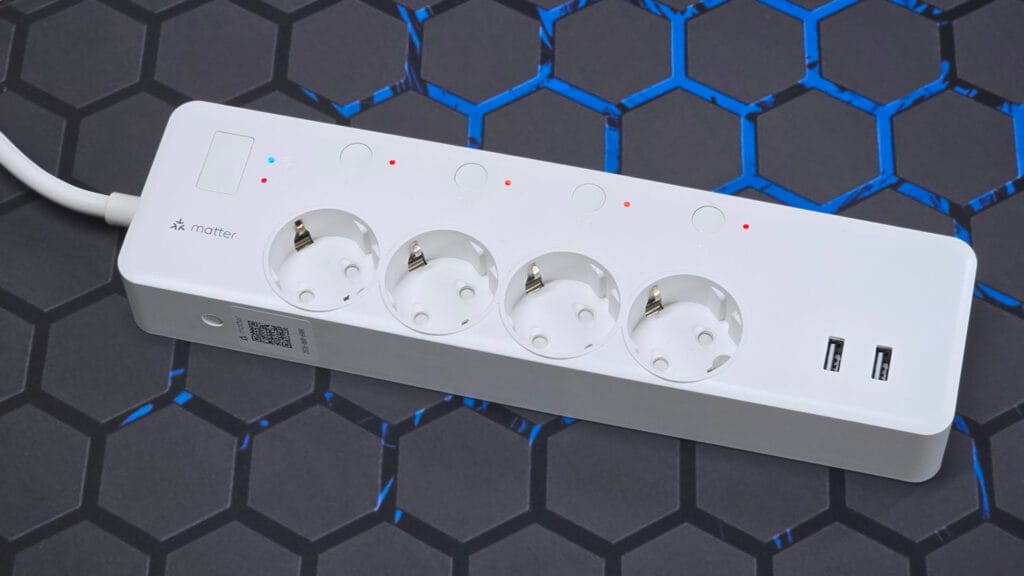
The bottom side of the power strip has two mounting holes spanning horizontally. These can be used to attach the power strip to a wall or a desk and prevent it from moving. The bottom cap is secured by 6 triangle bolts, which were very easy to remove thanks to the correct bit from my Kaiweets set. The cable is very thick and measures at 180cm long.
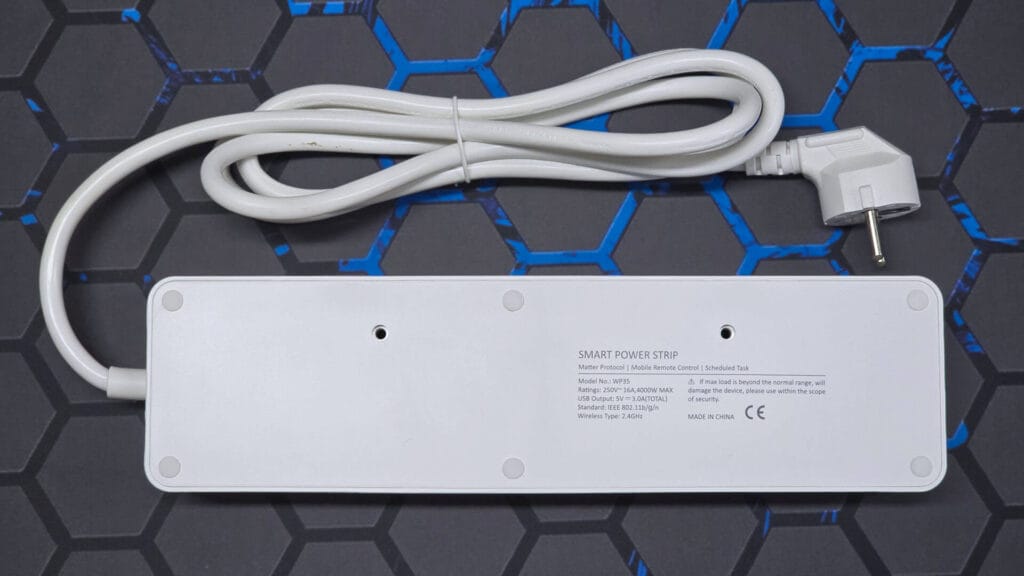
The first thing I noticed once I got it open is the large PCB spanning the length of the power strip. I don’t know why, but I expected a small PCB for controlling the relays. This Matter power strip has two individual PCBs. One holds the main relays and connection module, while the other holds the USB ports and voltage converter.
The solder for the phase and neutral is very thick, leaving little room for error. What’s more, the ground wire is actually connected and daisy-chained to each socket. I’ve seen some smart plugs where the ground connects to nothing and is there only for looks.
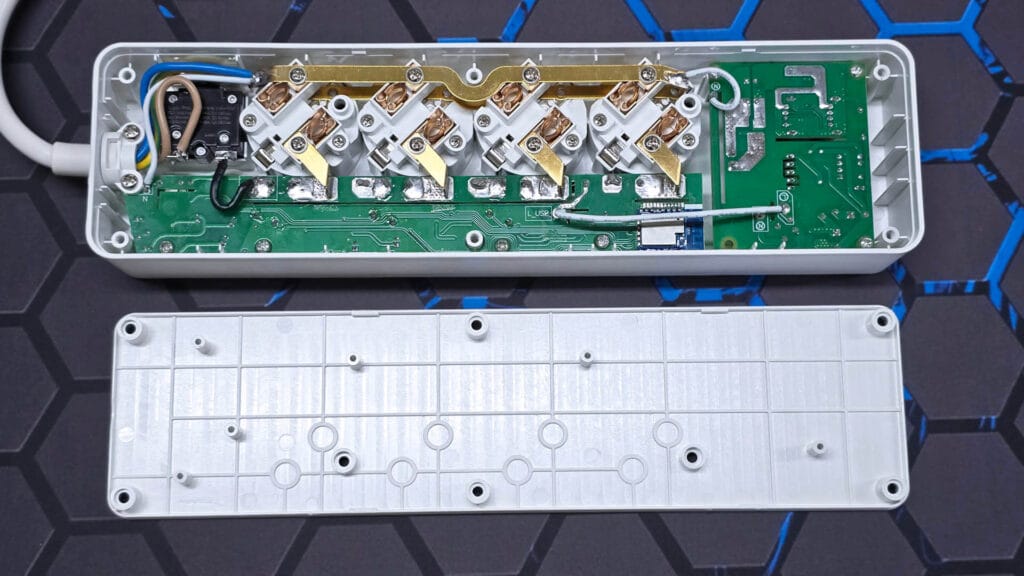
The WP32 Matter Power Strip is also equipped with a surge protection module designed to safeguard connected devices from voltage spikes and electrical surges. It features industrial-grade specifications, handling up to 250V AC and providing reliable protection for things connected within it’s specification. This power strips keeps positively surprising me the more I look into it.
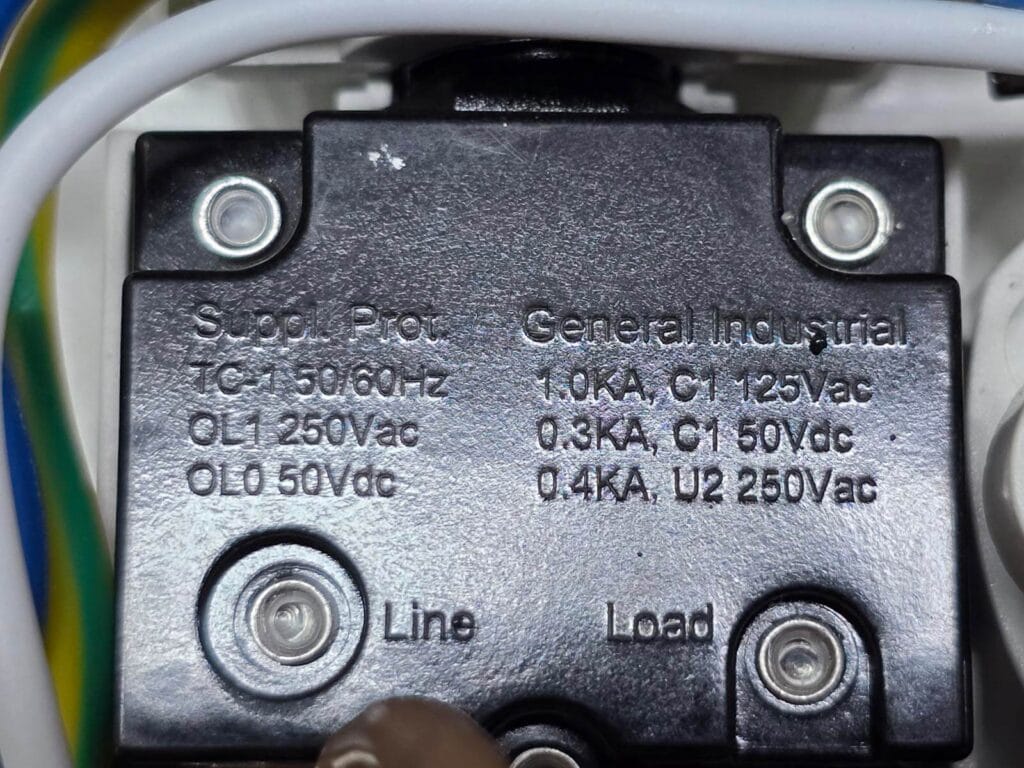
Once I took out the main PCB, I was able to check out the relays underneath. This Matter power strip uses high-power relays, manufactured by a company called Jieying Electrical from Ningbo, China. The relay model is labelled as JY32FNH-SH-DC5V [Datasheet] and can handle loads of up to 20A! This was a pleasant surprise and I appreciate when companies oversize beyond their specs. For reference, this power strip is rated for 16A.
This device uses the Tuya CB3S [Datasheet] module for communication. CB3S is a low-power, embedded Wi-Fi module with an integrated RF chip. Besides Wi-Fi, it supports Bluetooth which is used during the onboarding of this power strip to your Matter controller.
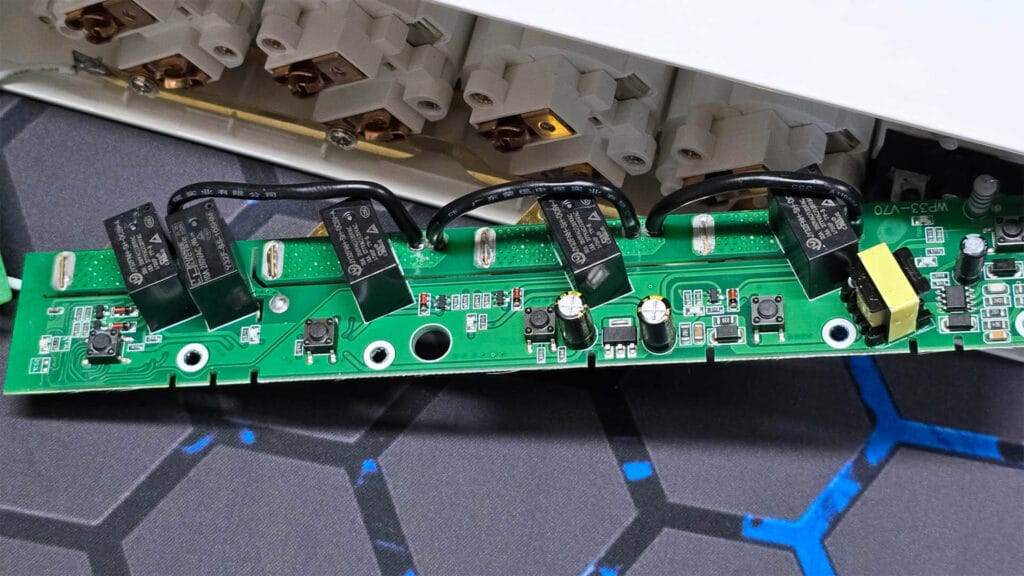
The PCB board containing the USB ports is very cleanly assembled. It has several electrolytic capacitors for filtering and stabilizing voltage coming in from the transformer. The USB ports can supply a total of 5V3A of current, or a maximum of 5V2A when used individually. While this cannot be used for super fast charging, it is more then enough to power anything you attach to it.
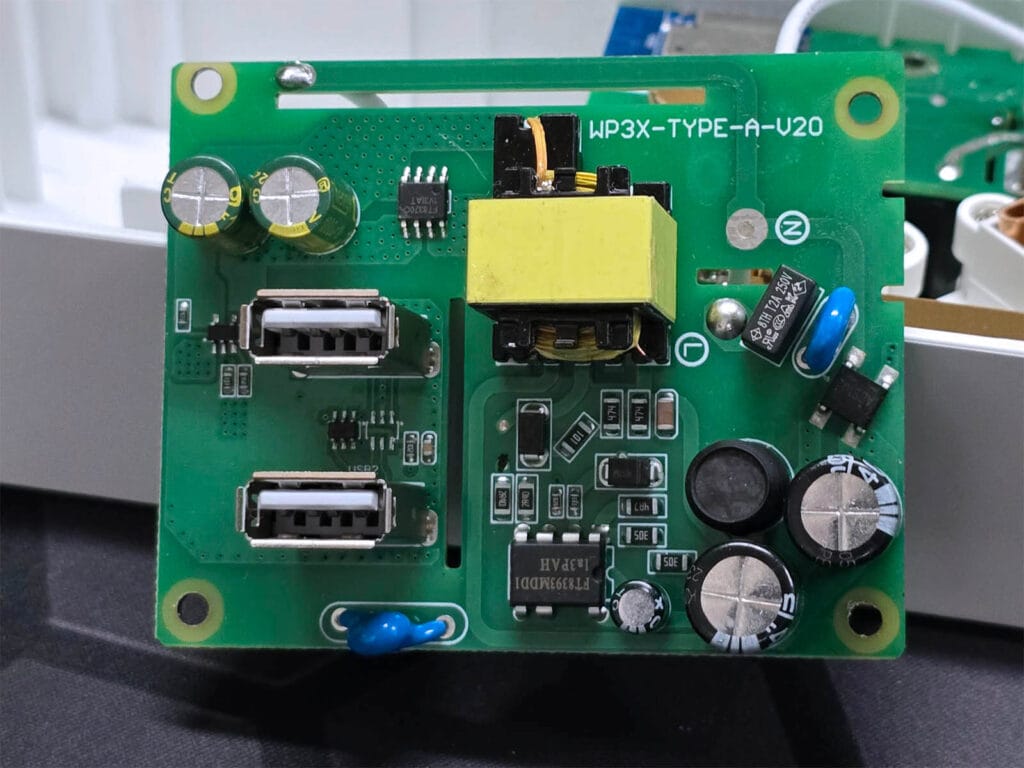
Home Assistant Integration
Once I assembled the device back up, it was time to test it out in Home Assistant. Once you have the Matter server add-on running, the pairing process is ridiculously easy. All I had to to was scan the QR code and the device popped in Home Assistant along with a bunch of entities. If you need to reset the strip, simply hold the button until the LED starts blinking.
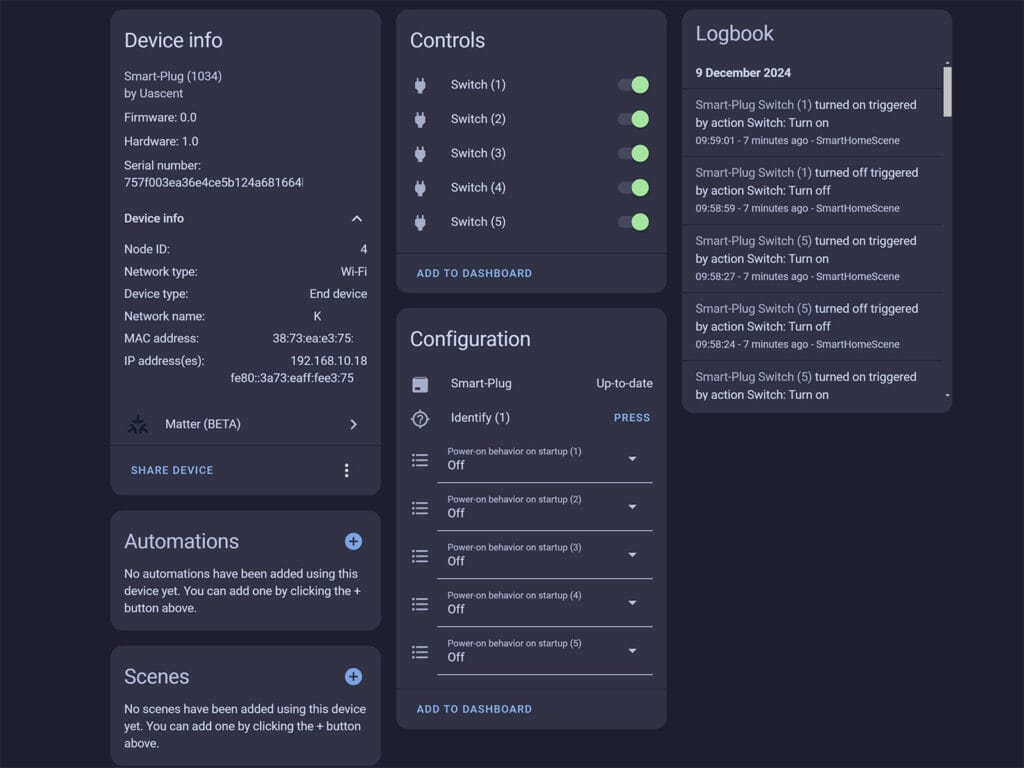
The first four switches (1-4) control the individual outlets while switch (5) controls the USB ports. As I mentioned earlier, the USB ports cannot be controlled individually and are toggled together. This Matter strip is also not equipped with energy metering capabilities.
I was pleasantly surprised that you could set the power-on behavior per switch in Home Assistant. This functionality was long overdue to appear in Matter-enabled devices, so it’s very welcome. You can set the behavior after a power loss for each socket and the USB ports to on, off, toggle and previous.
With this feature included, it’s safe to say this Matter Power Strip is completely compatible with Home Assistant and all features advertised are available and working as they should.
Usage and Testing
Once the Matter power strip was added to my Home Assistant Instance, I plugged in a bunch of things to get a sense of how it operates. As I tested this in my office, I connected my full PC setup with monitor, large desktop speakers, a water dispenser with heater and used the 4th socket to swap other small devices.
The first thing I looked for is the stability of the Matter-over-Wi-Fi communication. The power strip did not introduce any latency and toggled immediately once I gave the command in Home Assistant. Obviously, this is preconditioned by the quality of your Wi-Fi network. Matter-over-Wi-Fi is still Wi-Fi under the hood. In my instance, I noticed no hiccups whatsoever but your experience may vary.
The next thing I tested is the operation of the main AC relays. The relays produce a fairly clicky sound when toggled, which is a good sign in my book. While it’s definitely not the deciding factor, a more pronounced click indicates a larger or more robust internal mechanism, which reduces the risk of contacts sticking together. This particular relay is rated for 20A at 250VAC and 18A at 277VAC, making it very suitable for high-current loads and confirming its robust design for demanding applications.
The final thing I tested was the current provided by the USB ports. They can output a total of 5V3A when both are in use, or dish out 5V2A on a single one. This amperage can power almost anything you decide to connect to it without issues. Although it can charge you phone, this is not considered fast charging and will obviously be slower then your regular phone charger.
Final Thoughts
This WP35 Matter Power Strip is an excellent device, all things considered. It consistently exceeded my expectations during dismantling and testing. It’s well-built, grounded properly, equipped with surge protection, and delivers exactly what it advertises.
Matter onboarding was straightforward and worked as expected. It’s worth noting that even though it’s a Matter-enabled power strip, it still uses Wi-Fi under the hood. This means its performance may be affected by the quality of your Wi-Fi network, just like any other Wi-Fi-based device. If you prefer using Zigbee, there’s also a Zigbee version of this power strip.
I especially appreciated the fact that while the strip is rated for 16A, the relays are oversized at 20A. This practice is what makes a good product great. Even though I don’t like deploying Wi-Fi devices, I would be using this strip in my own smart home.
Availability for Different Markets
The Tuya WP35 Matter Power Strip I’m testing in this review is the EU variant, but I also added links for the US version. The US variant (WP34) is a 3-Socket version instead of 4, but it does have the two USB ports. Both are also available in Zigbee variants, fully supported in ZHA and Zigbee2MQTT. The strip is scarcely available on Amazon and is overpriced.
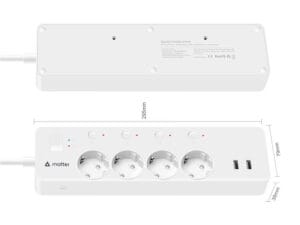
![]()
EU (Matter) | US (Matter)
EU (Zigbee) | US (Zigbee)![]()
Germany | Netherlands
*If links fail to open, try disabling your AdBlocker.
NOTE: Digging through AliExpress, I found some other interesting Matter power strips in different configurations. I have not tested these, so buy at your own risk.
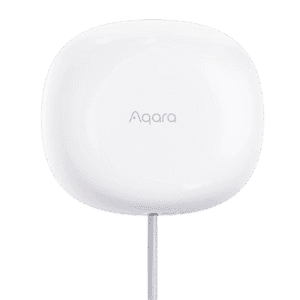
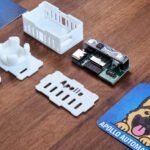
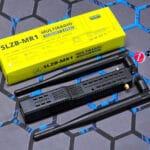
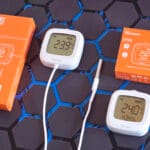
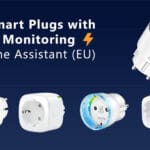
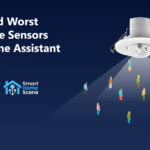
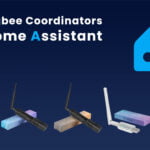
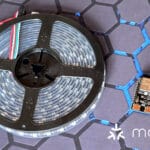
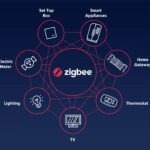
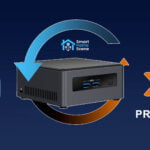
Nice review 😉
Thank you Sami, appreciate the feedback.
what is the power usage of the brick, the brick with switch 5 on but no usb attached and with all 4 switches turned on (but no load)
It did not occur to me to test this.
Please check back in a few days, I’ll measure and let you know
Thank you for the very detailed report! 36 Dollars would be great but when I click on the link its about 50 Euros 🙁
Yeah, AliExpress pricing is location dependent sadly
Thanks for the nice review. I like these Power strips, but I think it is badly priced, when you see you can get some power plug with energy consumption monitoring for like 4 € on Aliexpress, it’s way cheaper than these
I agree to an extent. Also, it’s worth noting that this is probably on the Matter bandwagon, milking the price as much as possible from early adopters. I got it for about 36 bucks, which is not that bad. However, AliExpress pricing is location dependent so some get as high as 50 euros when they check the listing.
Does the current matter revision provide energy monitoring ? I don’t get the hype on Matter and upper prices comparing to Zigbee for less functionalities
Matter itself recently added energy metering, but this device is not an energy meter.
Some Tuya plugs have their relay on the neutral line(!)
Looking at your photo it seems like this power board has the relay on the active line, is that correct?
Yes, it cuts the live line as it should be
Thanks for the review. Can you also test how much power it draws at idle? I have a wifi power strip of an unknown brand which draws 1-2W of power constantly even when all sockets are empty.
Yes, It did not occur to me to test this.
Check back in a few days, I’ll measure and let you know
Great review as usual. It’d be ideal if it also did energy monitoring.
Good to know the main processor. CB3S (Beken BK7321N) can be removed from Tuya cloud sh*t, and Matter doesn’t matter anyway, so ESPHome / OpenBeken / Tasmota can be installed on it.
Thank you for the review.